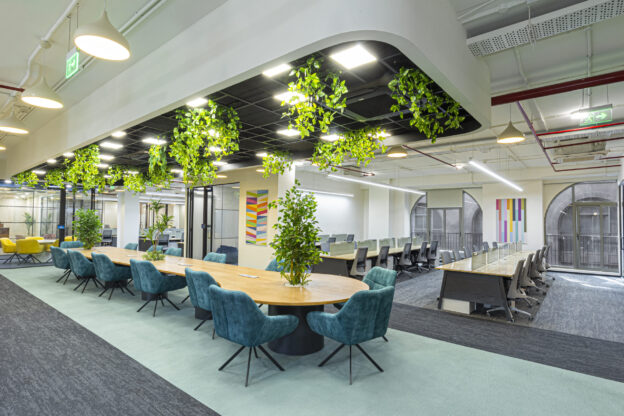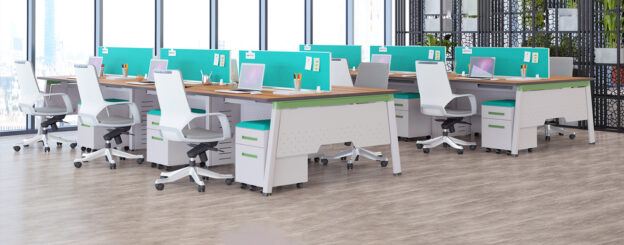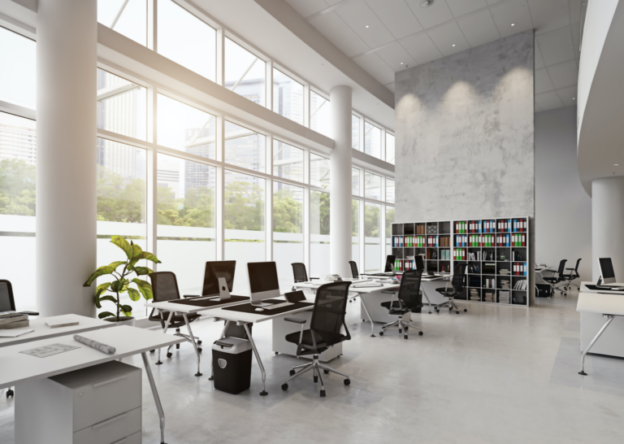In today’s ever-evolving business world, the role of a corporate office designer has become more crucial than ever. Gone are the days when an office design was simply about placing desks and chairs in a room. Today, office design is about creating an environment that fosters creativity, collaboration, and productivity while aligning with a company’s culture and values. A great corporate office designer is someone who not only understands the technical aspects of design but also the human elements that make a workspace truly effective. Here’s what sets apart a great corporate office designer in the modern business landscape.
1. Understanding of Functionality and Efficiency
A great office designer knows that the primary function of an office space is to facilitate work. They have a keen understanding of the workflow, work dynamics, and space utilization. Whether it’s creating a layout that enhances movement between departments or ensuring the right balance of private and open spaces, a talented designer will optimize the use of space to maximize employee efficiency.
With businesses in places like Vadodara aiming to make the most out of limited office space, the designer’s ability to create functional layouts that cater to both individual tasks and collaborative efforts is paramount.
2. Emphasis on Employee Well-being
Modern office design isn’t just about aesthetics or brand alignment—it’s about creating a healthy environment for employees. A great designer takes into account factors like natural lighting, ventilation, ergonomic furniture, and the right balance between work and relaxation zones. They ensure that the design promotes mental and physical well-being, which, in turn, boosts productivity and job satisfaction.
In today’s world, where employee wellness is a priority for companies, a corporate office designer must be able to craft spaces that minimize stress, prevent burnout, and contribute to a sense of comfort and well-being.
3. Creativity and Innovation
The business world today is dynamic, and companies are looking for ways to stand out. A great corporate office designer is someone who brings creativity and innovation to the table. They look beyond conventional designs and challenge the status quo, creating offices that reflect a company’s unique culture and values.
From introducing unconventional materials to experimenting with vibrant colors or flexible furniture arrangements, these designers create workspaces that inspire creativity, promote collaboration, and help brands establish a strong identity. This level of creativity is particularly important for industries that thrive on innovation, such as tech companies and creative agencies.
4. Adaptability to Changing Needs
The nature of work is rapidly changing, especially with the rise of remote work and hybrid work models. A great corporate office designer must be adaptable, designing spaces that can evolve as the company grows and its needs change. This involves incorporating flexible office designs, modular furniture, and multi-purpose spaces that allow for quick adjustments.
Businesses in cities like Vadodara, where companies are expanding or evolving rapidly, require designers who understand how to design spaces that can easily be reconfigured to accommodate growth, technological advancements, or changes in team structures.
5. Sustainability and Environmental Responsibility
Sustainability is no longer a buzzword; it’s a necessity. Great corporate office designers are well-versed in sustainable design practices and materials, striving to minimize the environmental impact of their designs. From energy-efficient lighting to using recycled or eco-friendly materials, they ensure that the office space not only looks good but also contributes positively to the planet.
This commitment to sustainability is particularly important in today’s business world, where corporate social responsibility (CSR) is a key consideration for both employees and customers. Designers who are conscious of environmental issues can create spaces that align with a company’s sustainability goals and contribute to a greener future.
6. Understanding of Technology Integration
Technology is at the heart of modern business operations, and a great corporate office designer must have a strong understanding of how to integrate technology seamlessly into the office design. From high-speed internet connectivity to smart lighting systems and audio-visual setups for collaboration, technology must be woven into the fabric of the office space without disrupting the overall aesthetic.
As businesses adopt more advanced technologies like smart offices, remote working solutions, and virtual collaboration tools, corporate office designers need to ensure that these technologies are easily accessible and integrated into the design in a way that enhances productivity.
7. Collaboration with Clients and Stakeholders
A great office designer is not just a creator; they are also a collaborator. They understand that office design is not a one-size-fits-all solution, and each company has its own unique needs and challenges. A skilled designer works closely with clients to understand their goals, values, and culture, as well as the specific needs of the business and its employees.
Effective communication is key in this process, as the designer needs to translate the client’s vision into a functional and aesthetically pleasing design. This collaboration ensures that the final design truly reflects the company’s identity and fosters a positive work environment.
8. Attention to Detail
Finally, great office designers possess an exceptional eye for detail. It’s often the small touches—the right lighting fixture, a well-chosen piece of artwork, or the perfect color palette—that elevate an office design from good to great. These details contribute to the overall ambiance of the space and create a cohesive and professional environment that employees and visitors can appreciate.
Whether it’s the ergonomics of a chair or the acoustics of a meeting room, every detail matters in ensuring the office space is comfortable, functional, and aesthetically pleasing.
Conclusion
In today’s fast-paced and competitive business world, the role of a corporate office designer has evolved beyond mere decoration. A great designer is a strategic partner who understands the importance of creating a workspace that not only aligns with a company’s brand and values but also enhances employee well-being, fosters collaboration, and integrates seamlessly with technology. As businesses continue to embrace change, the need for adaptable, creative, and sustainable office designs will only grow.
For companies in Vadodara and beyond, finding the right corporate office designer who can deliver on these expectations is essential for creating workspaces that are not just functional but inspiring and conducive to success.


